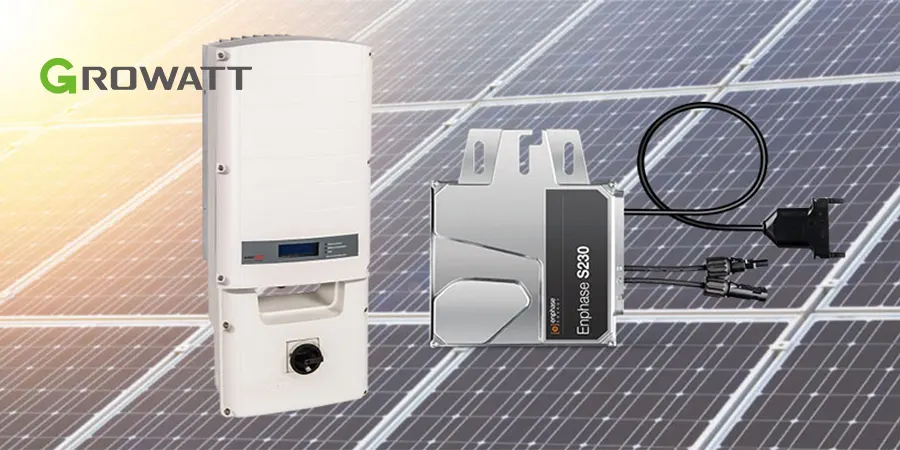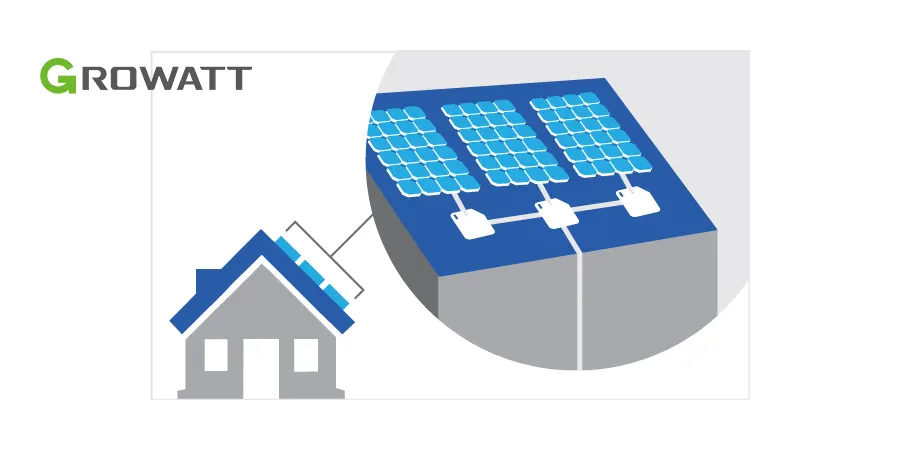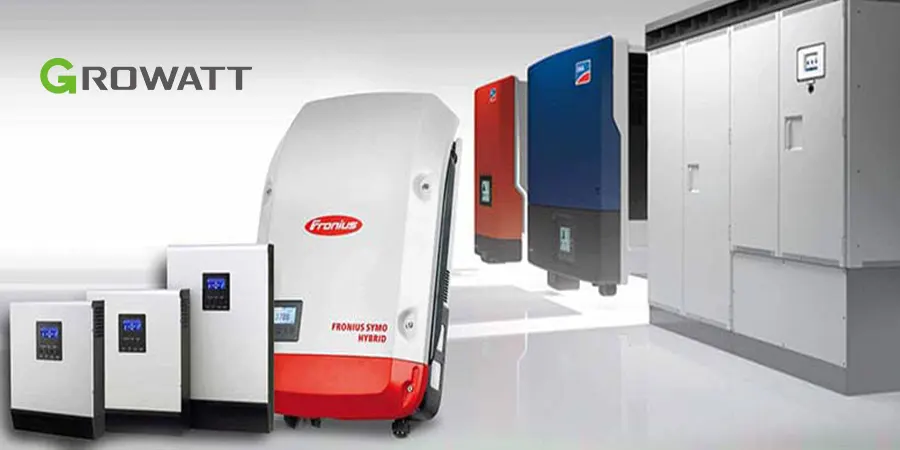Any solar energy system must include solar inverters because they transform the direct current (DC) produced by solar panels into useable alternating current (AC) power for residences and commercial buildings.
There are several types of solar inverters available, and each has a unique mix of benefits and drawbacks. We’ll look at the most popular solar inverter types in this post to help you decide which one could work best for your solar system.
Types of Solar Inverters
1.String Inverters
Advantages:
Cost-effective: String inverters are a preferred option for home installations since they are often more cheap than other varieties.
Simple Design: They feature an uncomplicated design that makes them simple to install and maintain.
Efficiency: String inverters have a high efficiency rating that guarantees little energy is lost during the conversion process.
Disadvantages:
Performance Dependence: The performance of the entire solar array is dependent on the string’s least productive panel. The output of the entire string is affected if one panel is darkened or broken.
Limited Monitoring: String inverters sometimes only provide the most basic monitoring options, making it difficult to check the operation of a single panel.
2.Microinverters
Advantages
Panel-Level Optimization: Every solar panel includes a separate microinverter, enabling maximum energy generation, particularly in situations when there is shade or varied panel orientations.
Enhanced Monitoring: Microinverters provide sophisticated monitoring, allowing you to keep track of each panel’s performance separately. Microinverters work at lower DC voltages, making them safer.
Disadvantages:
Higher Cost: Compared to string inverters, microinverters are often more costly, which makes them less cost-effective.
Complex Installation: The installation of microinverters, particularly for bigger solar arrays, can be more difficult and time-consuming.
3.Central Inverters
Advantages:
High Efficiency: Central inverters are extremely effective and are made for large-scale solar installations.
Reliability: They are renowned for their dependability and capacity to manage heavy loads.
Lower Maintenance: For big systems, fewer inverters translate into cheaper maintenance expenses.
Disadvantages:
Single Point of Failure: If the performance of the central inverter fails, it might affect the entire solar array.
Less Monitoring: In comparison to microinverters, central inverters may offer fewer monitoring alternatives.
Battery-Based Inverters (Hybrid Inverters)
Advantages:
Energy Storage: Hybrid inverters can store extra energy in batteries, enabling the usage of electricity at night or during power outages.
Energy Independence: They offer some degree of energy independence, which lessens dependency on the grid.
Grid backup: Hybrid inverters may produce backup power from the batteries’ stored energy in the case of a grid outage.
Disadvantages:
Higher Cost: Due to their capacity for energy storage, hybrid inverters are more expensive.
Complexity: Hybrid inverter installation and maintenance might be more difficult than with regular inverters.
The selection of a solar inverter is based on a number of variables, such as your budget, the size of your installation, and your unique energy requirements. For small to medium-sized installations, string inverters are economical and effective, while microinverters provide panel-level monitoring and optimization. Central inverters best serve large-scale projects, while hybrid inverters better serve those seeking grid backup and energy storage.
To determine your specific needs and make sure you get the best sort of solar inverter for your solar energy system, speak with a solar specialist before making a choice.




